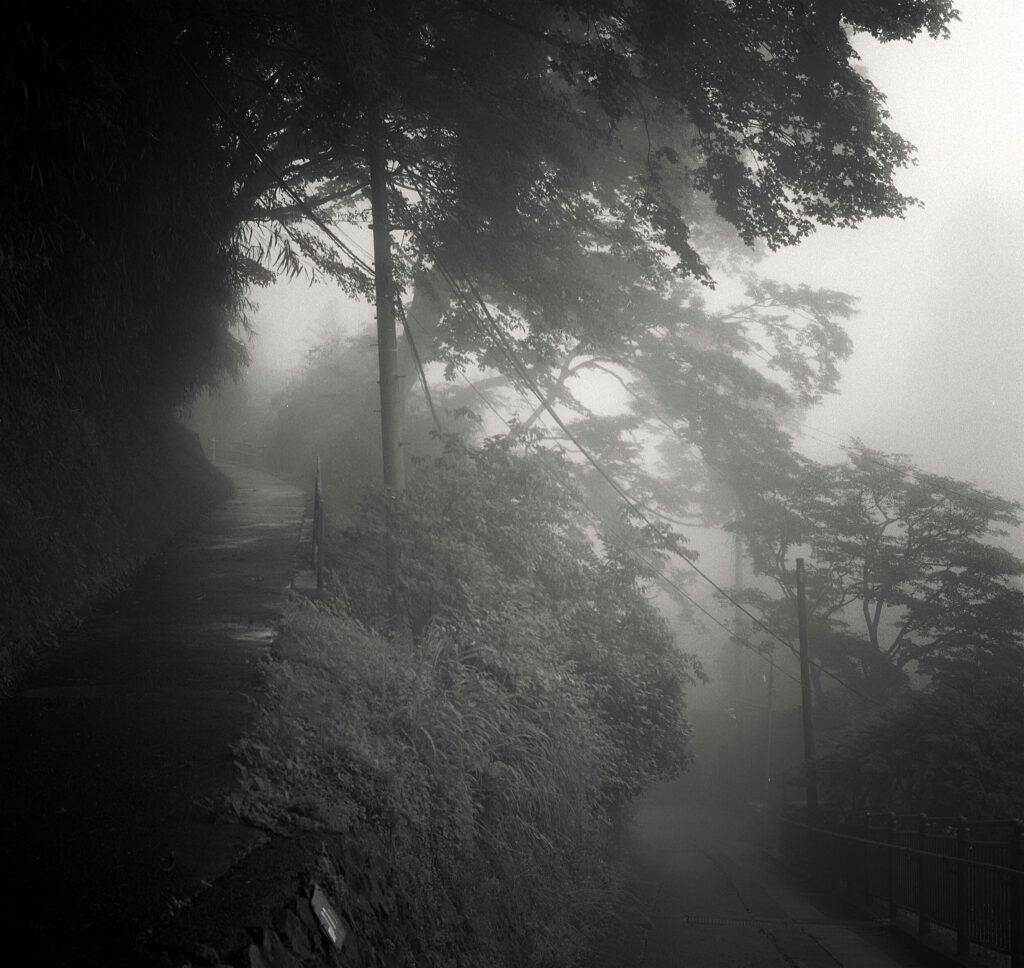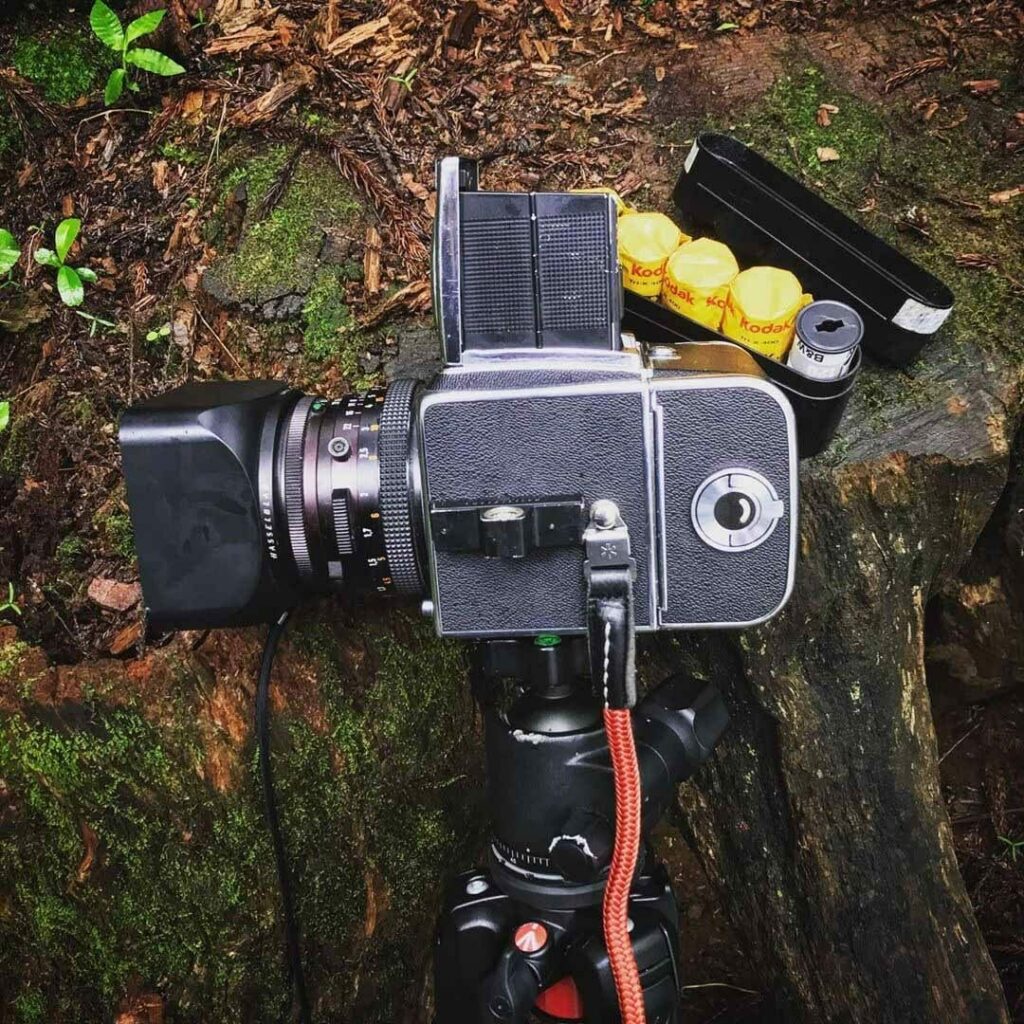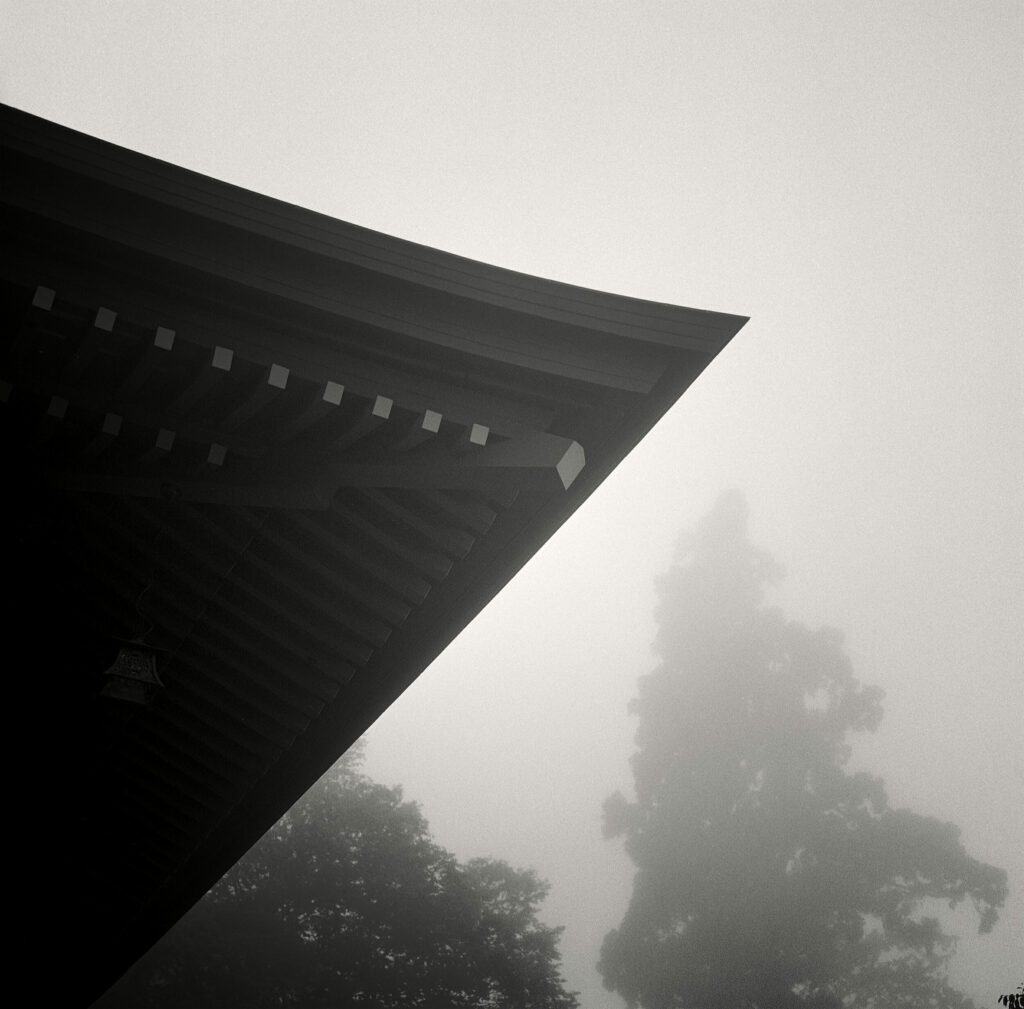There’s no such thing as bad weather.
On occasion, factors combine to lead us into a place of great creative energy, and in those conditions the work seems to simply pour out of us like water from a spring. Sufficient preparation counts for a lot, but so does pursuing the endeavor mindfully, ready to receive whatever may come our way. It was in this manner that I approached a simple weekend getaway to Mt Mitake, and these photographs are the result.

I’ve long said that there’s no such thing as bad weather, and I mean it. There may be weather that is considered bad for the purposes of one activity or another, but weather in and of itself is qualitatively neutral. It’s something that just is. It might be the case that the weather is one thing, and we wish it were something else, but that’s not the weather’s fault. That’s on us.
So instead of complaining about the weather, what if we reframe the situation to find some good in it? By doing so, we might not only find something that redeems it, but there’s an excellent chance we’ll have it all to ourselves.
In 2019, when my partner and I decided to take a weekend trip to get away from the intensity of Tokyo work life, we decided on visiting Mitake-san, a mountain in far western Tokyo prefecture where we would stay at a traditional Japanese-style inn near the summit. When the weekend arrived, it was cold, deeply overcast, and rainy. While initially a bit disappointed by this, we embraced it, and in the end it was the weather itself that contributed most to the experience.

Normally, when you leave the nearby train station, you can see the mountains rising up in front of you, on the opposite side of the river gorge, but on that day, they disappeared into the clouds just a couple of hundred meters up. And while it’s possible to take a cable car most of the way up, we chose to walk the endless switchbacks of the narrow road that goes to the summit.
The mountain itself is heavily forested, mostly with massive cedar trees, some of them as thick at the base as I am tall. Even on a sunny day, entering a forest like that quickly plunges you into darkness. With the forest also shrouded in a heavy fog, it became an all-day twilight. Everything was tremendously still, and the typical woodland sounds had gone into hiding. Nature was holding its breath, and as we climbed, we only whispered.
As we made our way up the road, I worked methodically, trying to be patient and letting the place show me what it had to show. When we’re in a hurry, it’s easy to fall into the trap of getting impatient and searching for the pictures we’ve already decided we’re going to make instead of listening, waiting for them to appear in their own time. The quiet places of the world have so much to tell us, if only we give them an opportunity to speak in their own voices. This is especially true when you’re dealing with the subtle, the hidden, the mundane. Don’t rush. Be patient.

It had been a long time since I’d worked in this way, and longer still since I’d done so with other people. About the only time this kind of photography works at all with other people around is when you’re with other photographers (everyone else gets bored and impatient as you make your compositions). But I was lucky to be with her, as she was as enamored of the place as I was. She was glad to study the mountain in her own way as I photographed.
Under normal circumstances, I am an unintentional maximalist with photo equipment, often taking several cameras on a brief trip just out of enthusiasm. This time, my approach was more disciplined. I took one camera, one lens, ten rolls of film, and a tripod, with the remaining space in my camera bag occupied by a few personal items and a change of clothes. I wanted to force myself to slow down and work more deliberately, while also keeping everything light enough.
By limiting the equipment and materials you have access to, you establish creative constraints. You may not be able to get every shot you see. But because of how the limitations force you to find creative solutions, the images you do make are often better than what you’d have made otherwise. Having access to a larger selection of equipment is not always a solution. The simplicity and constraints keep you focused on what you’re seeing and finding a way to capture that with the tools you have. It can be inconvenient, even frustrating, but I believe it’s worth it.

The walk up the mountain usually takes ninety minutes, but we took about four hours in total. It’s a popular destination for weekend and day trips, often attracting many visitors. With the weather being what it was, though, we practically had it to ourselves.
When we finally came out of the forest, the fog was still heavy, but without the dense tree canopy to block the light, our surroundings were luminous. We wandered our way toward the inn, with nearby buildings disappearing into the incandescent mist and narrow paths leading off into nothing. The road materialized in front of us and disappeared behind us as we walked.
At the top of the mountain is a complex of Shinto shrines. The site’s history goes back two thousand years. It’s the type of place where the ground almost vibrates beneath your feet and you sense the presence of something much larger than you. I have often experienced this feeling at shrines in Japan, but only rarely anywhere else.

With the afternoon approaching evening, we made one last venture out into the surrounding area, making our way to a Nanayo Falls, where one can practice takigyo, the iconic form of meditation involving sitting under the falling water to cleanse both body and mind. By this time, it was becoming too dark to focus my camera, so I had to give up making photographs for the day, but I didn’t mind.
Being in the forest, listening to the waterfall as the day’s light was running out was a profound and beautiful experience. After a fulfilling day of photography, there comes a point where you find the satiety of having done enough. A natural stopping point is reached, and you can happily put the camera away. I had shot about six rolls of film and knew I had gotten some good images. The satisfaction of finishing a good day’s work applies to creative work, too.

When we got to our room at the inn and took a rest, the view out our window, in a room we had reserved for the view of the mountain range, was a suffused blue glow into which a handful of trees disappeared. A light rain was falling by then, and we sat in the quiet room, watching the blue glow shift to black and the silhouetted trees merge with the sky.
While I am sure that the day would still have been wonderful had the conditions been sunny and warm, I am glad we had that dark, magical day exploring a mountain encased in a cloud. It changed our state of mind, and it changed the photographs I made. And the next day, when we descended and emerged from the clouds, it felt as if we were returning from some other dimension.

Before taking the train home, we sat and drank sake at a nearby brewery, looking out over the Tama River and quietly discussing our experience. It would have lost something without the wet conditions, and we agreed that we were lucky to have had them. Perhaps next time around, we’ll have the sun we’d originally hoped for, but we’ll be happy with whatever the atmosphere delivers.
There is, after all, no such thing as bad weather.
All images captured with a Hasselblad 500C/M, 80mm lens, and Kodak Tri-X film.


